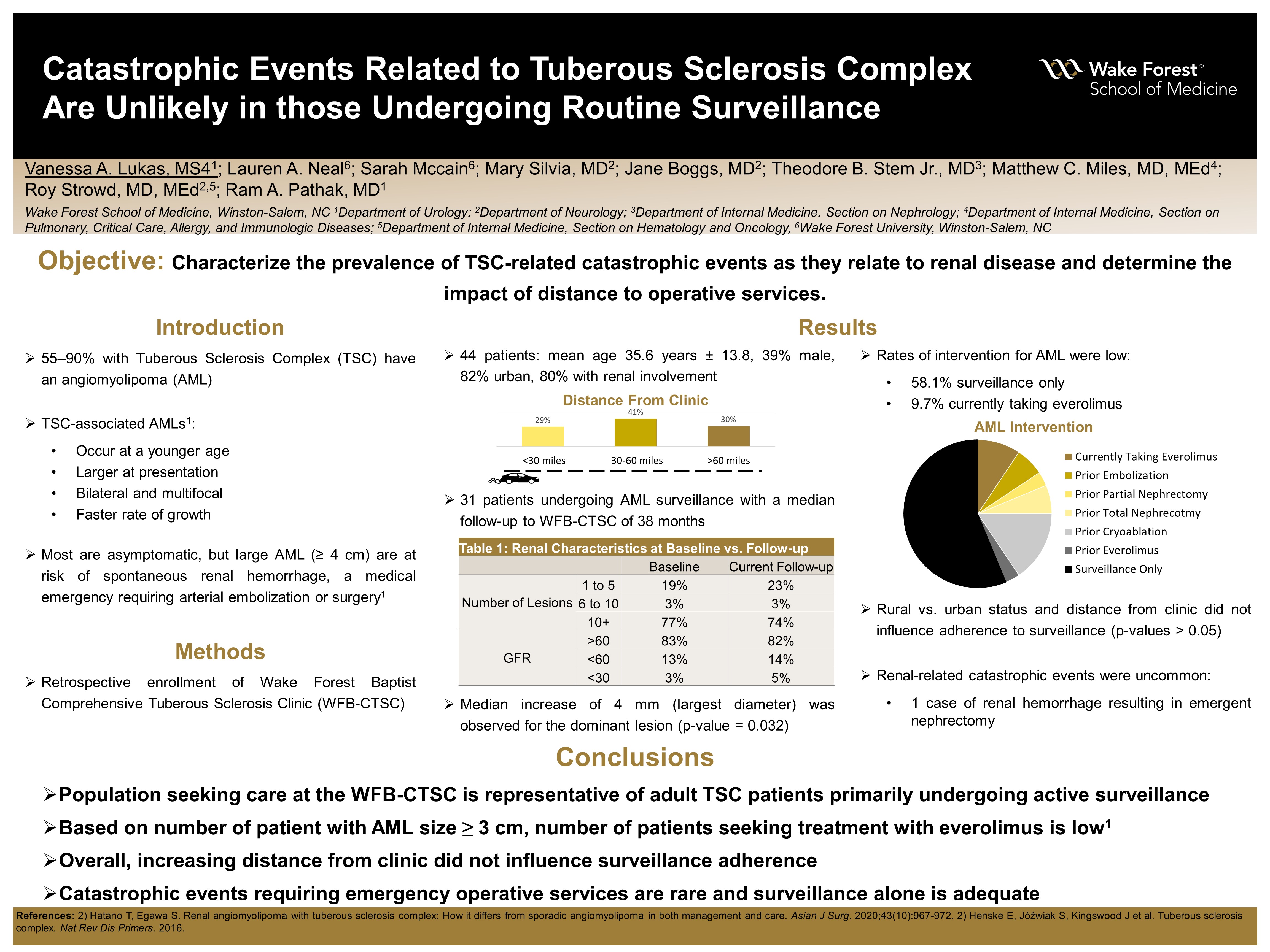Your message has been sent.
 CLOSE SIDEBAR
CLOSE SIDEBAR

Catastrophic Events Related to Tuberous Sclerosis Complex Are Unlikely in those Undergoing Routine Surveillance
Vanessa A. Lukas, MS4
Background: Tuberous Sclerosis Complex (TSC) is multi-system disorder characterized by epilepsy, cognitive dysfunction, and benign tumors of the eye, brain, heart, lung, and kidneys. TSC varies greatly in its severity and surveillance is necessary to monitor disease progression.
Hypothesis: We sought to characterize the prevalence of TSC-related catastrophic events as they relate to renal disease and determine the impact of distance of the patient’s residence to the site of operative services.
Methods: A retrospective analysis of patients afflicted with TSC was performed. Qualitative data for demographics, clinical manifestations of TSC, and renal specific characteristics were compiled. Only complete datasets were incorporated in the analysis.
Results: Complete data was available for 44 patients with mean age 35.6 years ± 13.8 (39% male, 82% urban). Distance traveled to clinic based on residential zip code was 30%, 41%, and 29% for >60 miles, 30-60 miles, and <30 miles, respectively. Frequency of TSC clinical manifestations included 86% with epilepsy, 84% with skin involvement, 80% with renal involvement, 80% with neurological involvement, 45% with pulmonary and/or cardiac involvement, 18% with lymphangioleiomyomatosis, and 14% with retinal hamartomas. Of those with renal manifestations, 77% had >10 angiomyolipomas (AML) at baseline imaging. The number of AMLs and estimated GFR did not change significantly over the median follow-up of 38 months. However, a median increase of 4mm (largest diameter) was observed for the dominant lesion (p-value = 0.032). For those with renal manifestations, rural vs. urban status and distance from clinic did not influence adherence to surveillance (p-values > 0.05). Catastrophic events related to renal manifestation of TSC were uncommon with 1 case of renal hemorrhage.
Conclusions: In this representative cohort of adult TSC patients, the most common manifestations include epilepsy, dermatologic, neurological, and renal manifestations. Increasing distance from clinic did not influence surveillance adherence. Catastrophic events occurred rarely and as such living near to emergency operative services is not likely to be necessary.
Powered by Acadiate
© 2011-2024, Acadiate Inc. or its affiliates · Privacy
